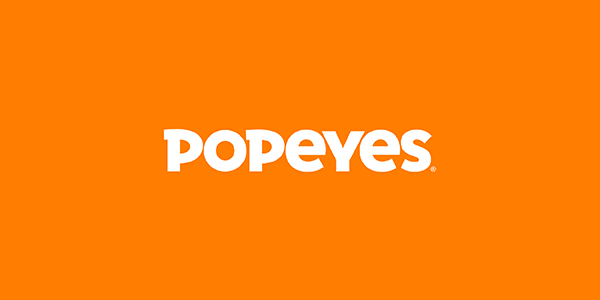6 Programmatic Tactics for a Successful Political Campaign Strategy

The year 2024 will go down in political history—not just for the results of the US presidential election, but for how much advertising was spent on it.
According to EMARKETER, 2024 marks the first time $12 billion USD has been spent on political advertising during a presidential race, with US digital political ad spend growing 156.3% compared to the previous election year.
Meanwhile, in Canada, although the next federal election isn’t expected to happen until 2025, it was recently revealed that the official opposition spent 20 times as much on ads as the governing parties’ campaign in 2023.
Political ad spending has always been known to fluctuate based on election cycles and fundraising efforts, with political ad spend traditionally spiking as candidates ramp up their campaigning.
Now, those spikes are growing more prominent, even outside of election years, with political parties advertising earlier in election cycles and turning to emerging channels like connected TV (CTV) to reach demographics that would have been previously inaccessible with traditional advertising methods.
With countries like Canada, Australia, Germany, Ireland, and more slated to vote for new leaders in 2025, programmatic advertising has never been more important to the success of political campaigns.
Read on to learn the benefits of programmatic advertising for political campaigns and walk away with six programmatic tactics that will help maximize your reach and make an impact in your next election cycle.
Benefits of Programmatic for Political Campaigns
Programmatic allows you to connect with voters across all of their devices, capturing their attention wherever they are online. Here are some of the other benefits of leveraging programmatic as part of your digital marketing strategy for political campaigns.
Speed
Unlike other forms of advertising, programmatic advertising allows political advertisers to quickly launch campaigns and make adjustments to targeting, messaging, and ad placements based on real-time insights and what’s happening on the campaign trail.
Greater Reach
Programmatic offers huge potential audience reach, including incremental reach, because the majority of people are online. In the US alone, there are over 320 million active internet users, many of whom can be strategically targeted using a programmatic advertising platform.
Granular Targeting
Programmatic advertising helps you reach your ideal voters by targeting them based on their geolocation and even their IP address. For example, Digiday reports that CTV is increasingly being used to reach swing voters, especially in local and statewide elections, due to its precision targeting.
Effective Reporting
With programmatic, you can access real-time reporting and data to measure exactly how your political campaign creatives and overall targeting are performing shortly after your ads launch.
6 Tactics for Your Political Campaign Strategy
Let’s dive into 6 programmatic tactics that will help you launch campaigns quickly and drive results.
1. Plan Your Campaign With Forecasting
Timing is everything in politics. With campaign forecasting, you can better understand how your campaign is going to scale and perform before you spend a single dime, helping you identify the highest-value opportunities, and how to reach potential voters across an optimal media mix.
Since forecasting is designed to help you understand how well your campaign will scale before it’s launched, it’s best to use this programmatic feature in the early planning stages of your political campaigns. If you know what your budget is and what locations and voters you’d like to target, then you’re in the perfect position to use this tool.
Forecasting provides you with the insights needed to get your campaign up and running quickly. By predicting how your campaign will scale ahead of time, you can adjust the parameters to ensure you reach the right audience and get the most out of your ad budget.
2. Use Geotargeting to Reach the Right Audience
Geotargeting is a key feature in political campaigns because it enables you to focus your efforts on specific regions. This means political campaigns can zero in on voters according to their location, which helps reduce the likelihood of wasting time and ad dollars on people outside of your target voting area.
Some programmatic platforms offer targeting by zip or postal code, allowing you to upload a list of codes to reach users. Or, you can target specific addresses or latitude and longitude coordinates and customize your radius down to the mile or kilometre to target users with more precision.
With StackAdapt, you can take things a step further and target specific congressional and legislative districts in the US and target electoral ridings for all Canadian provinces and territories, helping you hone in on key voter segments without wasting time manually adjusting targeting parameters.
3. Leverage Lookalike Audiences
Tapping into lookalike audiences enables you to reach potential voters who are likely to share similar interests and behaviours with your existing political base.
Using a pixel on your site, you can tag site visitors, and then leverage pieces of information about those users to target individuals that exhibit the same behaviour as those you’ve tagged.
You can also build a lookalike audience around your CRM list to increase reach, or suppress a list if that’s needed to avoid targeting existing supporters or donors.
With lookalike audiences, you can quickly expand your reach to new people who are likely to have an interest in your campaign and platform, even if they aren’t familiar with it yet. It’s a great way to build awareness and engage with undecided voters who may connect with your message.
4. Measure Candidate Popularity
Use a persuasion lift study to measure candidate popularity and voter persuasion by running a campaign that polls users’ perceptions of your client and other candidates after seeing your ads. You can then sort your audiences more accurately and continue engaging them by delivering different messages based on their response. Campaign reporting would include data that covers survey results, geographic breakdown, audience breakdown, creative breakdown, creative impact, and more.
5. Target Using Contextual Advertising
With consumer ad preferences and privacy-driven changes evolving, marketers are increasingly turning to contextual targeting to deliver relevant messages without relying on personal data.
Rather than targeting ads based on user behaviour, contextual advertising targets ads based on the content of the webpage or app the user is viewing. This targeting strategy helps you reach users while they’re in a particular frame of mind, increasing the likelihood that your message will resonate with them based on the relevance of the surrounding content.
With contextual ads, you can target niche phrases that are related to a campaign’s platform or to the policy issues your target audience cares about.
6. Use Retargeting to Re-Engage Voters
Although many political ad campaigns attempt to sway undecided voters, political scientists say they serve another important purpose: energizing existing voter bases and increasing voter turnout.
Using a cross-channel retargeting strategy is an important tactic for re-engaging voters who have shown interest in your political platform.
Introducing retargeting into your political advertising plan will help you drive engagement and ensure your messaging reaches the voters who matter most to your campaign.
Kickstart Your Political Campaign Strategy
Elections are increasingly decided by thousands of votes in a few key areas, making targeted outreach and messaging more crucial than ever for the success of a political campaign.
Want to run exceptional political campaigns? Request a demo to learn more about StackAdapt.







